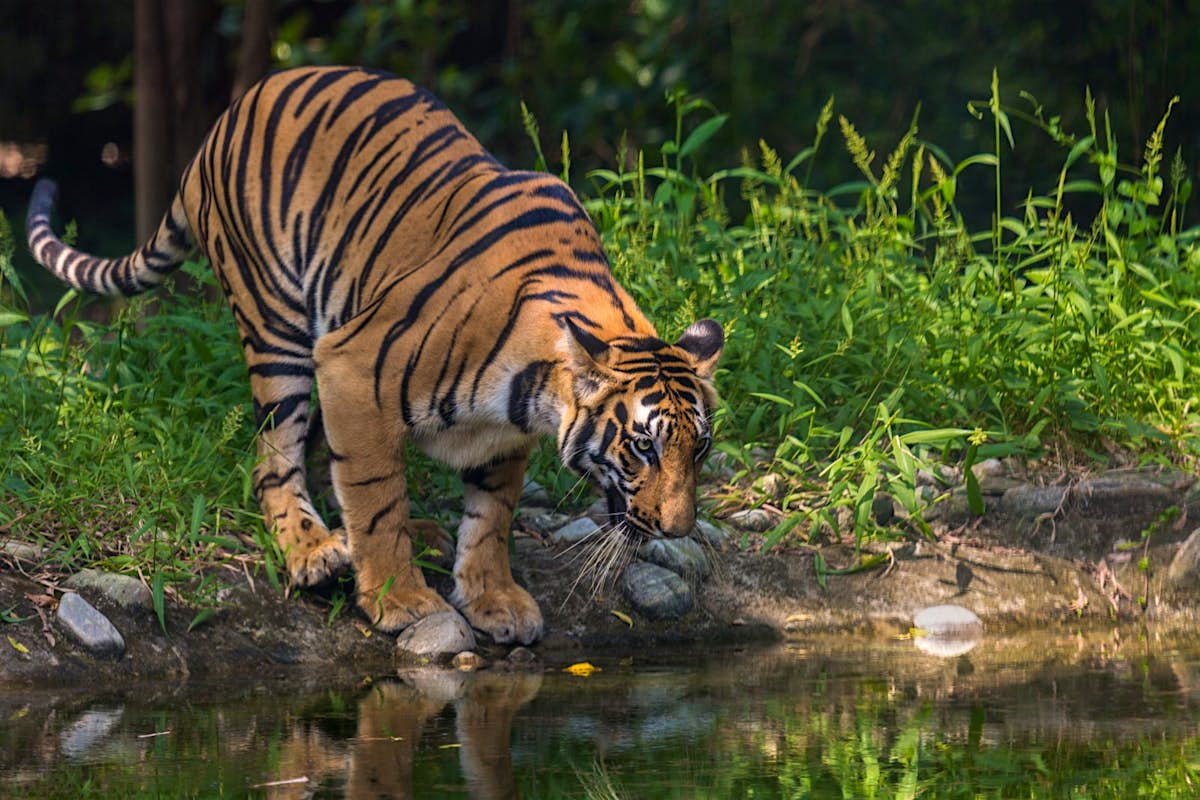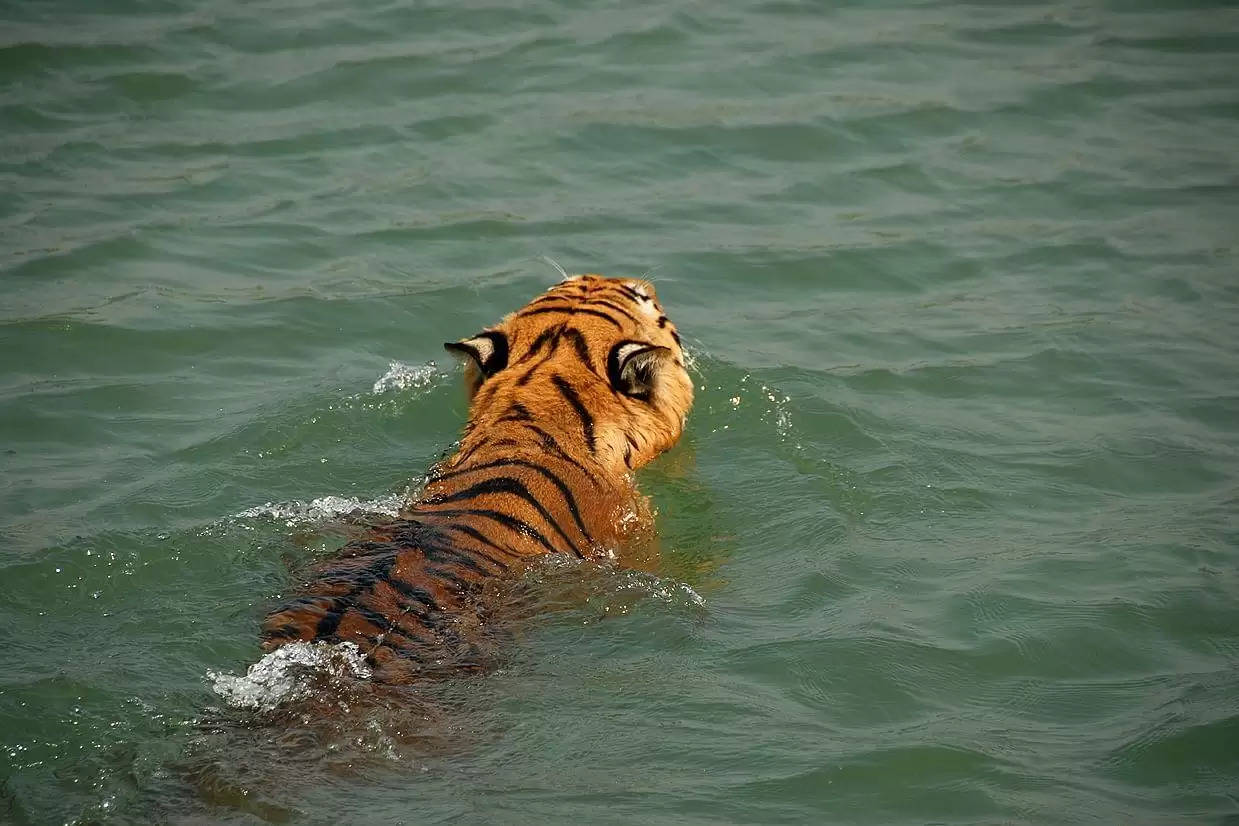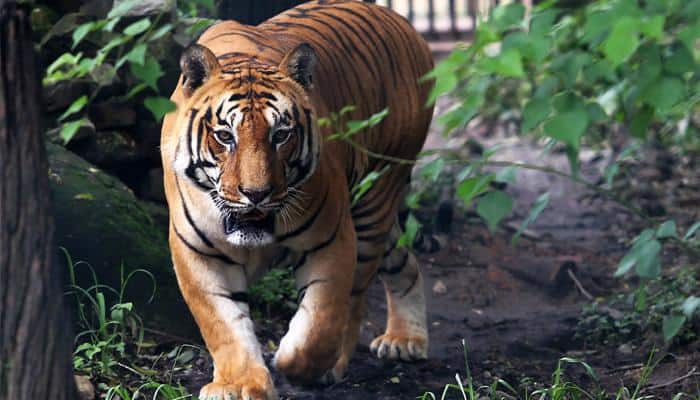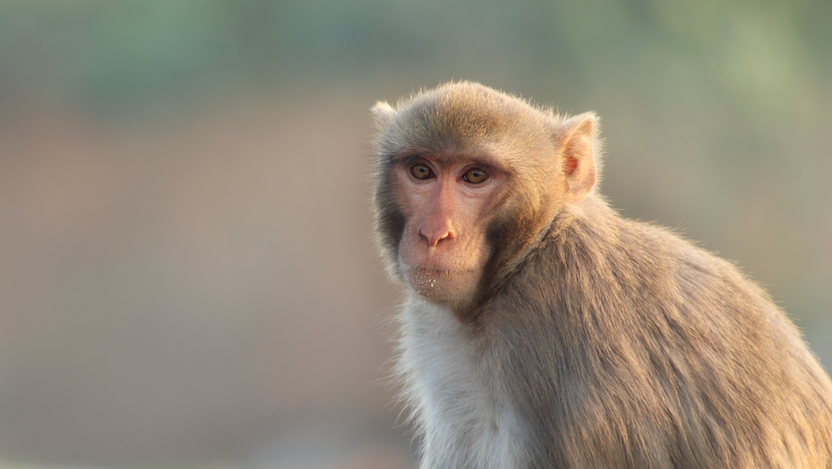What animals live in the famous Sundarbans mangrove forests: Being the world’s largest mangrove forest (covering an area of around 6,000–10,000 square kilometres, in the border between India and Bangladesh), the Sundarbans is an endless network of thick, dense jungle overflown by coastal streams and mud shores. As such, it hosts a diverse variety of wildlife that have adapted perfectly to live in the wet, and often salty, forest – though the sad reality is that these animals are now struggling to survive due to habitat loss and climate change. Among those creatures, there are the following: Let’s know more animals live in the famous Sundarbans mangrove.

Numerous species of fish (including the amphibious mudskipper), crabs, shrimps and other crustaceans, constantly roam, feed, and reproduce among the tangled mangrove roots or along the muddy banks. Let’s know more animals live in the famous Sundarbans mangrove.
The Sundarbans Mangrove forest is considered one of the largest ranged forests in the Globe (140,000 ha). Away from the chaos of city life, this Tiger land is situated in the delta region of Brahmaputra, Ganges, and the Meghna rivers on the Bay of Bengal. Let’s know more animals live in the famous Sundarbans mangrove.
The home of Legendary Royal Bengal Tiger is located adjacent to the border region of India’s Sundarbans World Heritage site that was inscribed back in the year 1987. This site is bisected by a complex network of tidal waterways, Small islands, Mudflats, and Salt-tolerant Mangrove forests. At present, this largest mangrove forest is one excellent example of ongoing ecological processes.

The Region is also famous for an array of fauna that consists of 428 bird species, World famous Royal Bengal tiger (Panthera tigris Tigris) along other threatened species like Saltwater Crocodile (Crocodylus porosus), and Indian Python (Python molurus). For many reasons, Sundarban National park is considered the best wildlife safari in INDIA. Let’s know more animals live in the famous Sundarbans mangrove.
The forest land of Sundarbans is spread across the area of 10,000 sq km across entire India and Bangladesh out of which 40% is found in India.
The land is at present the home to many such rare and universally threatened wildlife species such as Saltwater Crocodile, Water Monitor Lizard (Varanus Salvator), Olive Ridley Turtle (Lepidochelys olivacea), Gangetic Dolphin (Platanista gangetica), and of course the Royal Bengal tigers.
The forest in India is further divided into 24 Parganas (South) Forest Division and the Sundarban Tiger Reserve. Sundarban is perhaps the only mangrove forest on earth where the tigers are found. Let’s know more animals live in the famous Sundarbans mangrove.
The delta region consists of 10,200 sq km of mangrove forests distributed over the Indian piece of land (4,200 sq km) and in Bangladesh (6,000sq km) of forest area. The Indian Sundarban region consists of is about 4,200 sq km of reserved forests where 5,400 sq km is the non-forest area as well as a total of 9,600 sq. km.

The Sundarban Tiger reserve area is 2585 sq km. The whole area is further a conglomeration of creeks, islands, river channels that are about 102 in total number. 54 of these islands further have human settlements whereas the rest 48 are forest lands. A Sunderban Tour Package, lets you explore 2585 km that are divided into core and buffer zone. The core zone at present consists of Sundarban National Park covering an area of 1330.12 sq km. Let’s know more animals live in the famous Sundarbans mangrove.
Planning a Sundarban Tour means paying a visit to the natural World Heritage Site which was designated by UNESCO back in the year 1987. The forest is also amongst the three biosphere reserves in the country.
The origins of all these rivers particularly on the western side are specifically getting silted up leading to shallower and brackish water. Each of these rivers witnesses tides diurnally. A large network of Channels, Creeks, and Rivers compass the region at present.

Fauna ~
This unique mangrove ecosystem with its numerous ecological niches. Sundarban tour 2 night 3 days lets one witness 1586 Faunal Species where 40 are Mammalian Species, 35 types of Reptiles, 428 types of Birds. Let’s know more animals live in the famous Sundarbans mangrove.
These ranges of animals are also included in the schedule I and II ( rare & endangered) of the wildlife protection act 1972.
14 species are also found in Appendix I of the CITES. According to the earlier records animals like Wild Buffalo (Bubalus arnee), Barking Deer (Muntiacus), Javan Rhino (Rhinoceros sondaicus), Leopards (Panthera pardus), Barasingha (Rucervus duvaucelii) were once also found in the Sundarbans region.
Nevertheless, as per the habitat changes in habitat and human-induced pressures these animals became locally extinct.
Read More
Major Faunal Species :
Mammals –
Tiger is one of the topmost land-based predators in the Mangrove ecological system. These beasts in the mangrove area have further adapted to the saline water and other such animals are further the excellent swimmers having their diet, ranging from Cheetal, Fish, Crabs, and Wild boar. Let’s know more animals live in the famous Sundarbans mangrove.
Tigers in Sundarbans survive in extremely stressed conditions, where consider anything moving within the jungle including man as prey. Because of this habit, they have been termed man-eaters.

Other mammals of interest found in Sundarbans are Dolphins – both the Gangetic Dolphin ( Platanistagangetica ) and Irrawaddy Dolphin ( Oracellabrevirostris) are found in Sunderbans. Nevertheless, Indian Civet (Viverricula indica), Rhesus Macaque (Macaca mulatta), Wild Boar (Sus scrofa), Finless porpoise (Neophocaena phocaenoides), Leopard Cats (Prionailurus bengalensis), Jungle Cats (Felis chaus), Fishing Cats (Prionailurus viverrinus), Smooth-coated otters (Lutrogale perspicillata), are also found to be reported from the region.
Reptiles –
Estuarine crocodiles are an endangered species that are present in good numbers in numerous waterways and rivers. These are also found to be basking in the mudflats of the region typically during the winter months. Withal, to bring an increase in their numbers a Crocodile Project is on at the Bhagabatp.

Where apart from crocodiles, other reptiles like snakes are also found in large numbers. Out of 97 spp typically 53 are present in West Bengal. Crucial ones are King Cobra (Ophiophagus hannah), Common Cobra (Naja naja), Indian Python (Python molurus), Rat Snake (Pantherophis obsoletus), Green Whip Snake (Hierophis viridiflavus), Green Pit Viper (Crotalinae), Common Krait (Bungarus caeruleus).
Snake bites are one of the biggest reasons for morality in Sundarbans. A few of the other reptiles spotted in the region are Water Turtles (Chelonioidea), Spotted Pond turtles (Geoclemys hamiltonii), Softshell turtles (Trionychidae), and Indian flapshell turtles (Lissemys punctata).
The sea turtles consist of Olive ridley (Lepidochelys olivacea), Hawksbill turtle (Eretmochelys imbricata), and Green sea turtle (Chelonia mydas). River Terrapin (Batagur Baska) is another such endangered species that is epidemic in the region.
Water monitor lizards are further even spotted in large numbers.
Avifauna –
Sundarbans is highly rich in avifauna where the recent surveys even indicate that there are 428 species of Birds. This further even consists of a huge number of migrants from higher latitudes typically in the winter months. Sundarban tour 2 night 3 days is tight-packed during these times.
A high number of waders are even spotted in mudflats and sandbanks of the region. Major species of Sandpipers (Scolopacidae), Spoonbills (Platalea), Stilts (Himantopus), Eurasian Curlew (Numenius arquata), and Common Redshank (Tringa totanus) are another reason to pay a visit to Sundarbans.
The raptors further mark Crested serpent eagle (Spilornis cheela), White-bellied sea eagle (Haliaeetus leucogaster), Brahminy kite (Haliastur indus), Oriental honey buzzard (Pernis ptilorhynchus), Shikra (Accipiter badius), Black Kite (Milvus migrans), Changeable hawk-eagle (Nisaetus cirrhatus), Peregrine falcon (Falco peregrinus), Amur falcon (Falco amurensis) and occasionally Black-shouldered kite (Elanus axillaris), Pallas’s fish eagle (Haliaeetus leucoryphus), Short-toed snake eagle (Circaetus gallicus), Eurasian Marsh harrier (Circus aeruginosus), Short-toed eagle (Circaetus gallicus), etc. It is also to be mentioned that Goliath heron is rarely to be seen in the area.
Different types of herons witnessed in the region are Grey Heron (Ardea cinerea), Pond Herons (Ardeola), Black-crowned night heron (Nycticorax nycticorax), and Purple Heron (Ardea purpurea).

Other species of aerial birds spotted are Green Pigeon, Sunbirds, Cormorants, Seagulls, Egrets, Cuckoos, a variety of Ducks, and the Lesser Adjutant Stork. The area is also called the paradise of Kingfishers owing to the presence of 9 out of 12 species of kingfishers. Amid the monsoon season, numerous heronries are formed where species like herons, egrets, and openbills have been found in the nests.
Fishes and Crustaceans –
The creeks and rivers of Sundarbans are highly rich in Molluscs, Crabs, and Fish. The amphibious Mudskipper fish namely: Periophthalmus, and Boleopthalmus are most of the time found moving near Jetties and Riverbanks of Sundarbans.
Endangered species of sharks and Rays like Ganges shark (Glyphis Gangeticus), White Spotted Shovelnose Guitarfish (Rhynchobatus djiddensis), Pondicherry shark (Carcharhinus hemiodon), etc are found here. Besides these other animals which can be seen in the region are Indian Dog shark (Squalus acanthias), Bull shark (Carcharhinus leucas), Hammerhead Shark (Sphyrnidae), Blacktip Shark (Carcharhinus limbatus), Pale-edged stingray (Dasyatis zugei), etc.
A few of the other fish types include Topshe, Bhetki, Pomfret, Parshe, Gurjali, and Hilsa.
Amongst the crustaceans are various other types of prawns which even consist of tiger prawns that are a significant source of revenue.
Fiddler crabs (Uca), Ghost crabs (Ocypodinae), and two extremely primitive species of trilobites commonly known as Horseshoe Crab( Limulidae ), which are highly endangered species and regarded as living fossils are also found in Sundarban.
We have Sundarban Tour Packages Daily Basis.
For Booking Of Best Sundarban Package (Starting from 2799/-)
Royal Sundarban Tourism
Visit: https://tinyurl.com/y6smhoup
Contact: 7439965413 / 8584838109
What app link : https://tinyurl.com/yxtvhcs3
Email: info@royalsundarbantourism.com
Address: Sundarban. Gosaba Market Durga Mandir Road, Pin – 743370, West Bengal, India
